Where to pour powder in the washing machine and how much powder to pour: balance of efficiency and savings
The washing machine has long become a faithful assistant to housewives.In order for the laundry processing process to please you with its results, you must strictly follow the operating rules. First of all, you need to know where to put the powder in the washing machine and how much detergent is needed for a normal wash.
The article we presented describes in detail where and in what order washing powder should be loaded. We’ll tell you how to choose the optimal composition for removing contaminants from the items being processed and how to choose the proportions. Following our recommendations will help you operate your washing equipment correctly.
The content of the article:
Rules for using detergents
Most often, modern units use powdered products with different compositions. They can be fully or partially synthetic, concentrated, made from soap or herbal extracts, but their packaging must be labeled “for automatic washing.”
Where should I put my laundry detergent?
It is strictly not recommended to use preparations for manual treatment of laundry: they cause strong foaming, which can lead to clogging of the hose and, as a result, to leaks.
Powder is poured into different types of washing devices in different ways. U semi-automatic machines Usually there is no separate cuvette for detergents; the powder is poured into the tank along with the laundry.
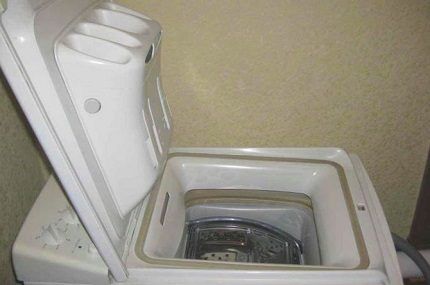
In machines with vertical loading, the cells for powder, conditioner, and bleach are located on the inside of the hatch located at the top.
For front washing machines, the detergent compartment is usually located in the upper left corner. Depending on the brand, its design may vary.
Let's take a closer look at the design of the powder tray. The retractable cuvette, designed to bring detergent into the drum, has a well-thought-out device. As a rule, it is made of plastic: the front panel is the color of the body, and the inner surface is white or gray.
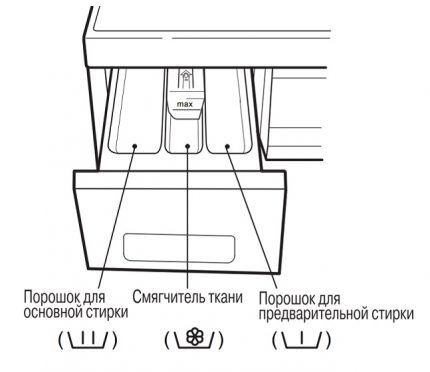
The device is divided into three, less often into four compartments, which are marked with letters, symbols, Roman or Arabic numerals:
- In the largest module, designated by numbers II, 2 or letter IN The product required for the main wash cycle is added.
- Medium compartment, numbers are written on it I, 1 or a letter A, designed for filling with washing powder, which is used for pre-washing laundry. You can also add bleach or stain remover here.
- The smallest department, which is usually located on the left, is intended for pouring flavors and conditioners. This part may be marked with numbers III, 3, in a word Softener, image of a flower (star).
To regulate the amount of softening agent, a limit strip with the word "max" is often applied to the conditioner compartment, indicating the limit limit.

In some cases, this compartment is divided into two parts by a partition, and a removable module can also be used. One of them is intended for the conditioner itself, the second for diluted starch, flavoring or other additional substance.
Rules for loading detergent
The powder is poured into the cuvette randomly; it is not at all necessary to distribute it evenly throughout the entire container: the main thing is that it does not spill out over the edges.After the manipulation, you need to close the compartment tightly, and only then start the machine.
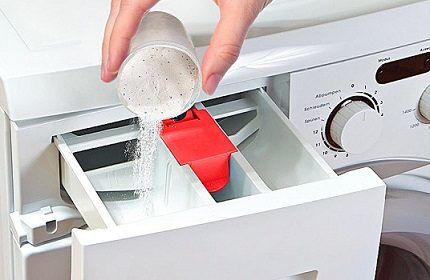
Some washing machines have levels in the cells that allow you to control the amount of detergent added. However, housewives often pour the powder by eye, remembering the amount from previous washes.
The design features of the machine ensure that detergents (powder, conditioner) enter the drum along with the flow of water supplied through the tray. Each compartment has holes that create conditions for dissolving these products with a stream of water and transferring them to the tank.
Complete transportation of substances is facilitated by both the high pressure under which water is supplied and the smooth walls of the powder receiving device, which facilitate the release of the dissolved product.
Features of loading detergent into the tank
Sometimes housewives are faced with the question of whether it is worth adding powder directly to the drum. Let's look at this question in detail.
When do we add powder to the drum?
This measure is forced: it has to be resorted to if the detergent tray is damaged.
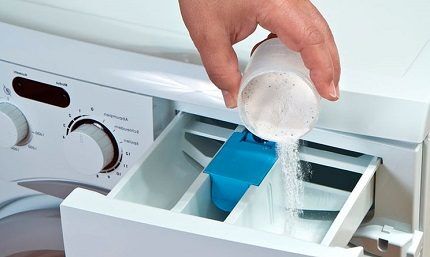
In this case, it is worth first of all to find out whether the compartment really does not cope with the proper functions.This can be done simply: carefully inspect the item after washing. If residues of detergent are found in it, it means that it was not washed completely due to malfunctions.
Pros and cons of the alternative method
There are different opinions about adding detergent directly to laundry.
Supporters note the following positive aspects:
- In this case the amount of detergent can be reduced, because it comes into contact with things.
- Such The method increases the service life of the machine, and also relieves the user of caring for the tray, which is one of the most problematic components of washing units.
- If powder particles get through the ditch, they can stick to the inner walls and then get onto the laundry when rinsing. This does not happen when pouring into a drum, thanks to which things get rinsed faster and better.
At the same time, there are a significant number of disadvantages:
- In the compartment, the powder is washed out with water, entering the drum already partially dissolved. When adding the product directly to the laundry, it will take much longer to dissolve.
- Washing powder granules that fall on dark-colored items may leave light marks.
- If the product is poured onto the wall of the drum, then at start, part of it will be pumped out by the pump along with the water remaining in the tank from previous washes.
- Some wash programs that require batch use of detergent will not be available if detergent is added to the drum.
- There is no point in adding powder to the drum when planning a pre-wash or soak.Such modes involve draining the water after passing the initial stage; Along with the liquid, the detergent dissolved in it will also leave, which will not wait until the main stage of the cycle.
- It is also not possible to use this method to add conditioner or other rinse aid, which should only be added at the final stage of the process.
The use of a special container will partially avoid the negative consequences: a plastic jar with holes marked on the lid. The detergent poured into it will flow into the water gradually and will not be washed out immediately.
At the same time, this method will not solve the problem of using conditioners or other rinses.
What products can be added to laundry?
At the same time, there are a number of modern products that, according to the advice of manufacturers, must be introduced into the drum.
Such substances include:
- Powders made from soap. These substances have a coarse granular structure, which can clog the hole in the cuvette, which can lead to leakage and flooding of neighbors.
- Phosphate-free powders, as well as the means for the production of which are used plant extracts.
- Powders for washing baby clothes: pouring into the drum makes it easier to rinse laundry.
- Modern varieties of detergents, available in the form of gels, capsules, compressed cubes.
It is not recommended to add gel-like preparations to the cuvette: due to their thick consistency, they are slowly washed off with water. Because of this, their residues can enter the tank already at the final stage of the cycle during rinsing and spinning.
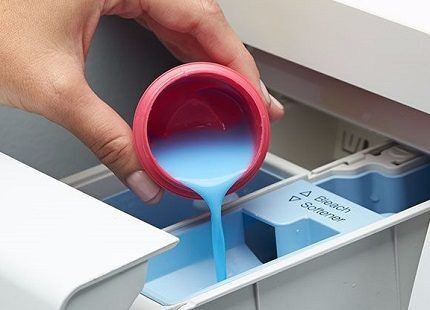
If for some reason gels need to be added to the tray, it is recommended to first dilute them with water. The capsules were specially designed for use in a drum; other options for their use are not provided.
All these products can be added to the drum in different ways:
- pre-dilute with water;
- pour directly onto laundry;
- place in a special bag (this option is especially recommended for powder based on plant raw materials).
Sometimes housewives have to deal with situations where it is not possible to determine the purpose of the tray compartment (faded markings and the inability to check the instructions). In this case, it is quite possible to recover the information experimentally.
To do this, run the device in the no-soak mode, leaving the detergent drawer slightly open. If you look into the cuvette at the very beginning of the cycle, you can see how water will flow into the compartment intended for washing powder.
Determining the optimal amount of funds
Depending on the selected program, the following products must be added when washing products:
- For simple washing, just pour the powder into the cell marked with the letter B or the number 2 (II).
- For a full cycle with soaking and rinsing with the addition of softener, powder is loaded into compartments A and B, and conditioner is poured into the tray marked with 3 or a “flower”.
- If the laundry is not heavily soiled, you can do without pre-soaking.In this case, it is enough to add detergent to compartment B (II); If desired, rinse aid can also be added to the small compartment.
Conditioner (fragrance, rinse aid) can be poured into the tray at any stage of the process until the start of the final stage (rinsing and spinning).
What affects the amount of powder?
The amount of detergent required for washing depends primarily on the volume of items loaded into the machine.
In addition, factors such as:
- degree of soiling of the laundry;
- hardness of water;
- amount of water required for washing;
- selected program;
- washing technology.
The more stains on the products, the higher the consumption of detergent. If the stains are complex, it is better to use a stain remover or bleach.
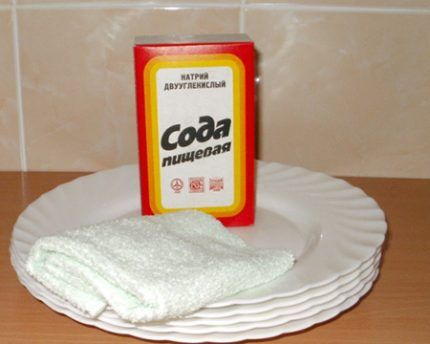
Washing in soft water requires less powder than in hard water. To determine what type of water is in your region, just look at the transparent window when you start washing. If bubbles are visible on it, it means that soft water is flowing from the taps.
The liquid can be softened artificially by adding a special product containing phosphates to the washing powder. A large volume of washing water implies an increased content of detergents.
Different modes involve the use of a certain amount of washing powder.In some cases, the difference can be striking: for example, when washing 3 kg of laundry in the “Cotton” mode at +60 °C, 6 tablespoons of detergent will be required, whereas when choosing the “Synthetics” program at +40 °C, only three are required.
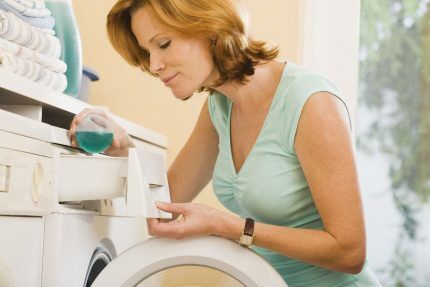
Innovative solutions used in modern models of washing machines from the best manufacturers, allow you to reduce the consumption of electricity, water, and detergents.
Such technologies include:
- “smart bubbles” EcoBubble;
- steam wash.
In the first case, a special foam generator is used, with which the powder is mixed in water before it enters the drum. Under the influence of bubbles, the product penetrates better into the fabric structure, effectively removing dirt, which helps save powder.
Steam washing involves applying a heated jet of water to items placed in a drum. This technology promotes the rapid dissolution of detergents and the effective removal of contaminants, including old ones.
In this case, the water temperature is chosen arbitrarily; it does not necessarily need to be heated to high temperatures. Important advantages of steam washing include the radical destruction of germs and allergens.
Calculating the proportions of detergent
Don't mindlessly pour into the tray washing machine household chemicals. Exceeding the norm threatens increased foaming, which can lead to clogging of the hose and leaks. If you do not calculate the consumption and add little detergent, the laundry may not wash well.

We will try to determine exactly how much detergent powder should be poured into the washing machine.
As a rule, the label of any product contains dosage information, and sometimes the manufacturer supplies the pack with a measuring spoon or cup. According to the manufacturers, 115 grams may be required to wash clothes, and even 225 grams for heavily soiled items.
Experience shows that good washing results can be obtained using much less detergent. For lightly soiled items, it is enough to add one heaped tablespoon of powder (25 g) per 1 kg of laundry.
If things are heavily soiled or washing is carried out in very hard water, it is recommended to increase the dose to 1.5-2 tablespoons per kilogram.

Concentrated powders, which include Japanese products and Amway products, are beneficial to use. Their proportions are calculated regardless of the amount of laundry loaded: only 2 tablespoons of detergents of this type are sufficient for any cycle.
If you use capsules, you should know that one element is enough for a cycle, regardless of the load.
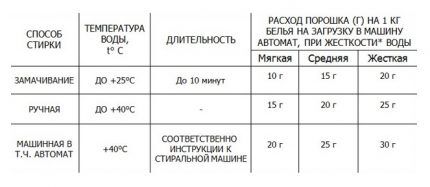
Liquid and gel detergents are usually added at the rate of 1 tablespoon per cycle (regardless of the volume of items); for hard water, it is recommended to increase the amount of detergent to 2 tablespoons.
Caring for the washing machine cuvette
In order for the powder receptacle to work properly for a long time, it is necessary to follow a number of recommendations.

Periodically, air conditioning must be filled into the compartment. After soaking, the cuvette is removed from the niche and then thoroughly washed with a brush.
At the same time, the walls of the hole are also cleaned, where dust and accidentally spilled powder often accumulate.
Conclusions and useful video on the topic
The video below explains how much detergent you need to add when washing in an automatic machine:
To ensure high-quality washing of clothes with minimal powder consumption, it is necessary to take into account a number of factors.
To determine the required amount of detergent, you need to take into account the volume of laundry loaded into the automatic machine, the hardness of the water used, the degree of contamination of the products, and the features of the mode selected for washing.
In addition, you should also follow the recommended algorithm of actions, correctly placing washing powder or other product into the cuvette intended for it.
Would you like to talk about how you load powder into the washing machine cuvette? Do you want to share tricks and secrets of backfilling that will be useful to site visitors? Please write comments, ask questions, post photos on the topic of the article in the block form below.




Many housewives don’t really bother about how much powder they need to put in the washing machine. After all, this depends on the amount of laundry and the degree of its contamination. I switched to washing gels, they are much more economical. In addition, they are better washed out of the fabric, but also require certain dosages depending on the concentration of the product.
Indeed, you should not neglect the recommendations on the amount of powder or other detergent, since not only the quality of washing clothes depends on this, but also subsequently the condition of some parts of the washing machine. Namely, I consider preventive measures against scale formation on a tubular electric heater to be an important point.
I use exclusively washing powder when washing and I’m satisfied with everything. I don’t understand these gels or liquid detergents, I tried it once, but didn’t like it. Moreover, they are not recommended to be washed at high temperatures. I usually use less powder than indicated on the package. I think that there is no point in pouring so much and you can save money. Usually everything washes out well.
Help me figure it out, I have an Electrolux with vertical loading, four compartments. Where and what to pour. Model lavamat 45100 5.5 kg. Thank you ))))